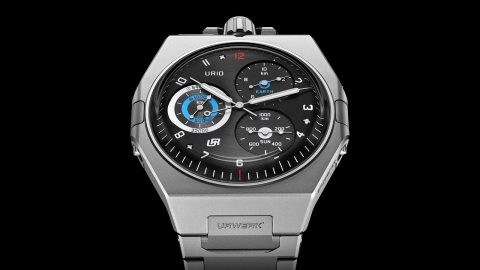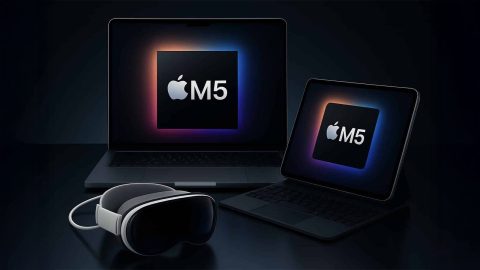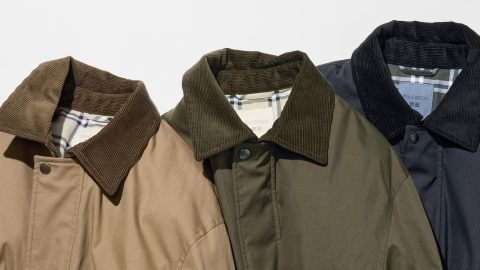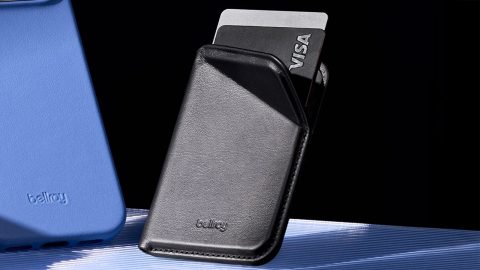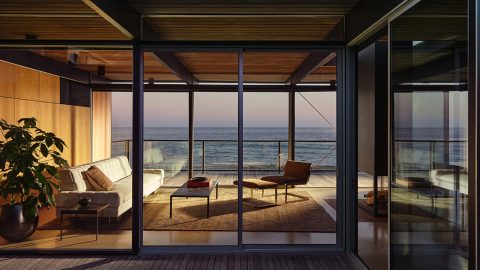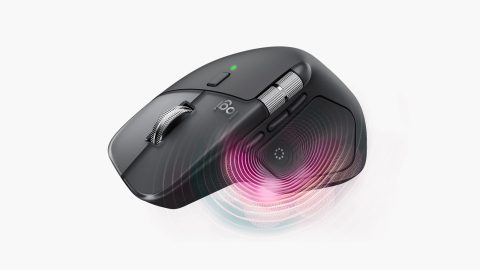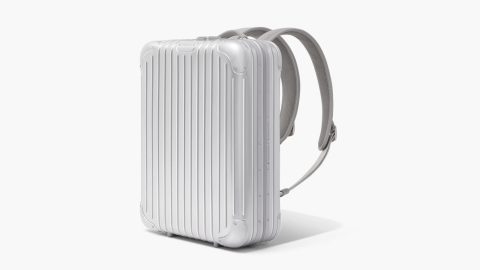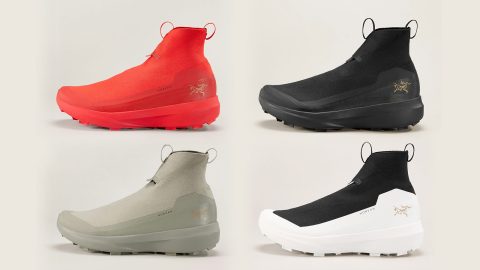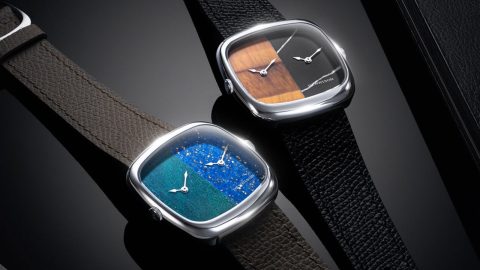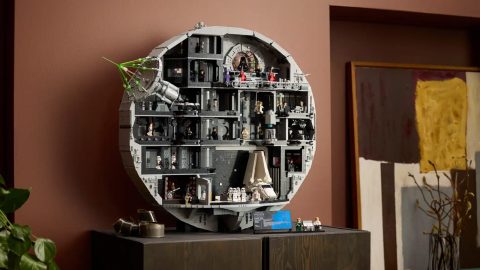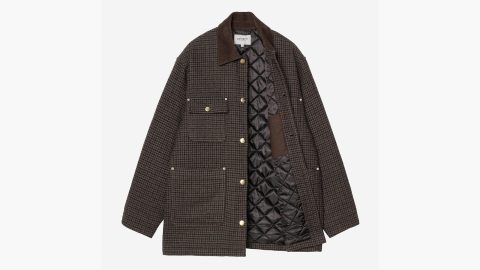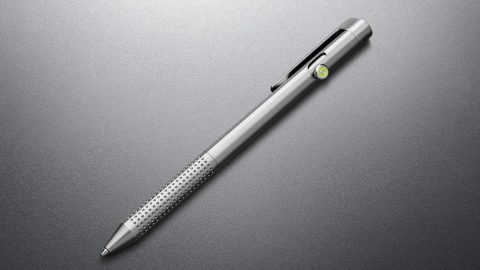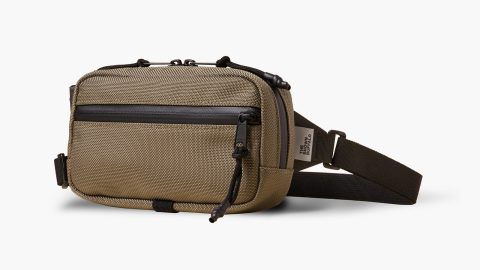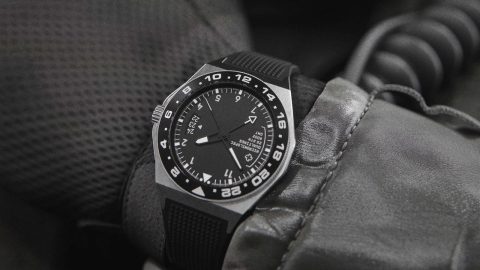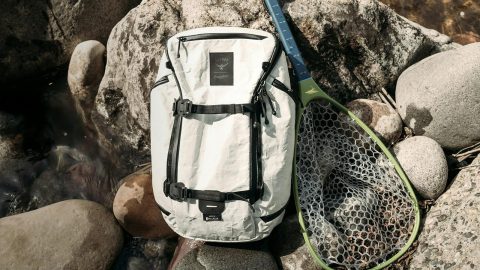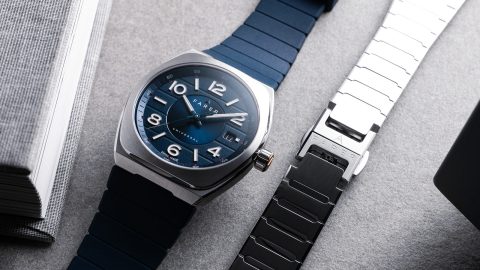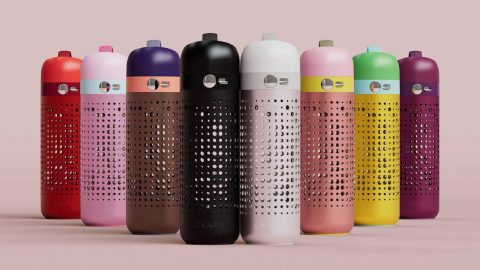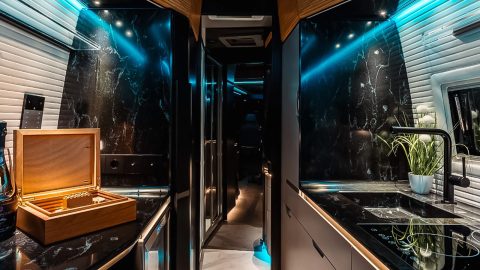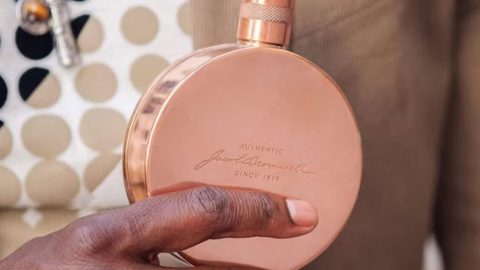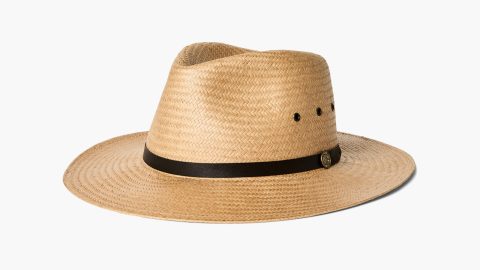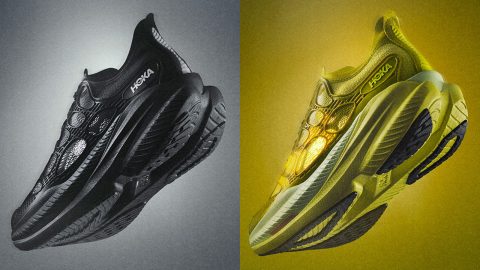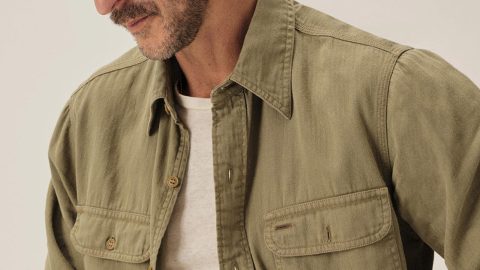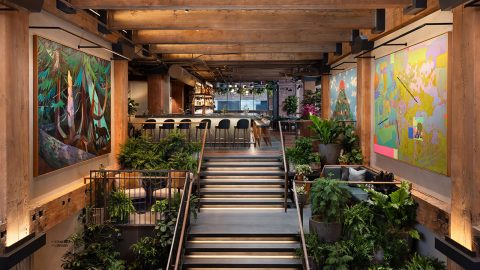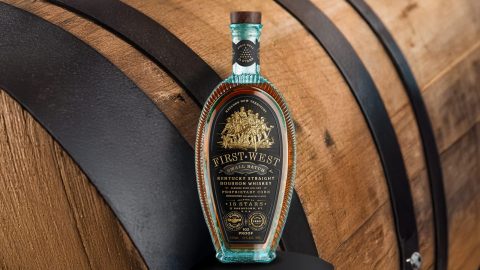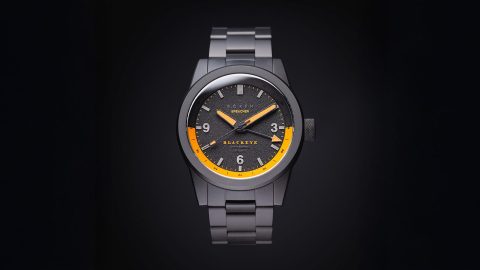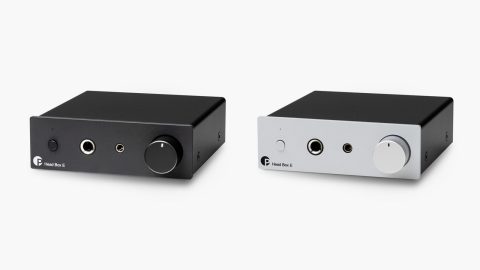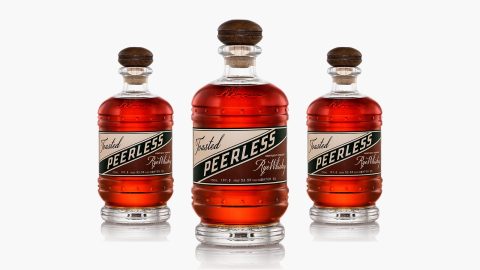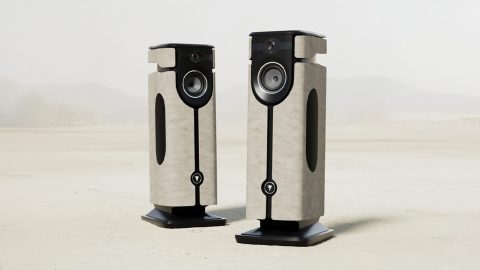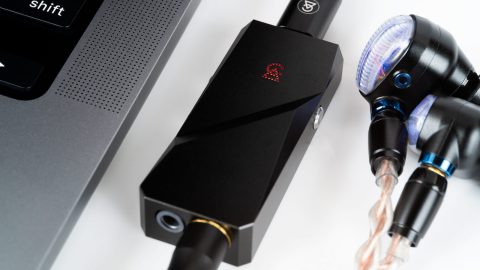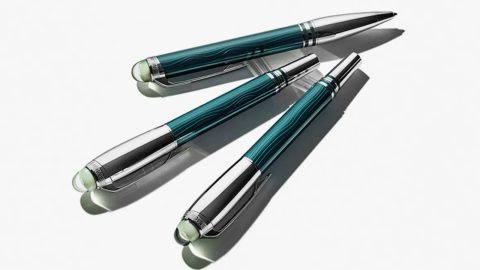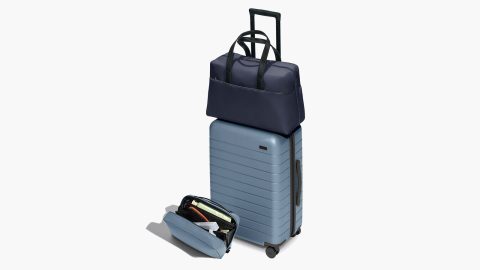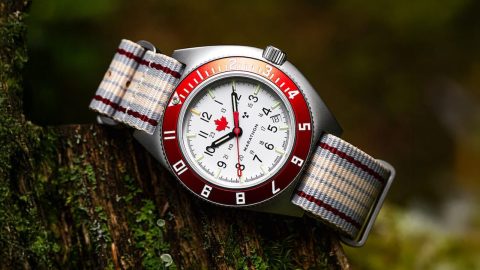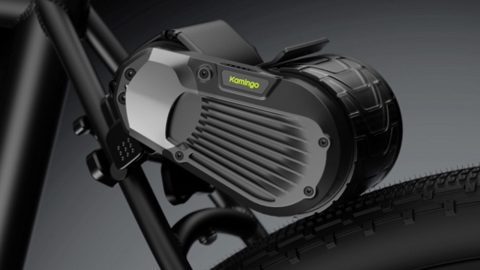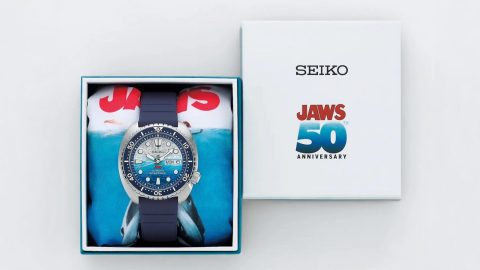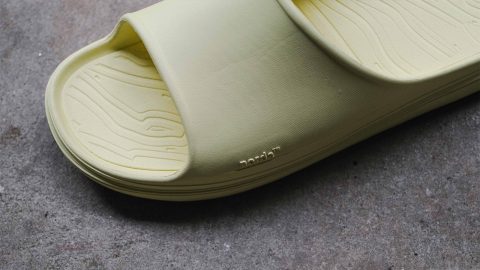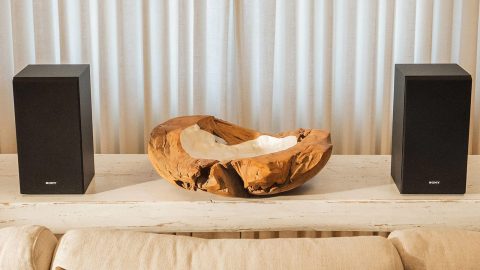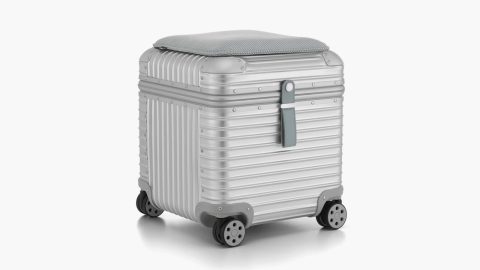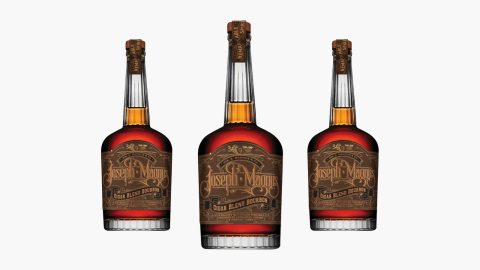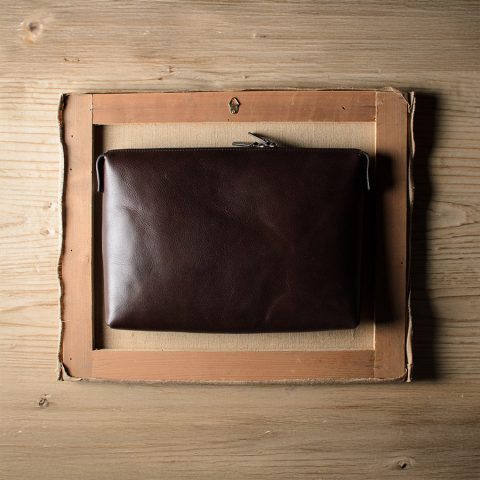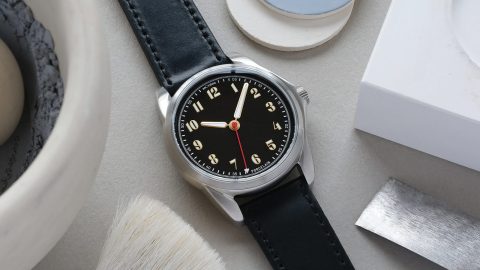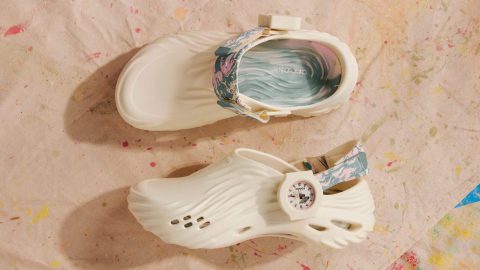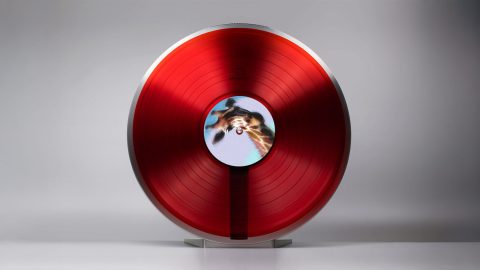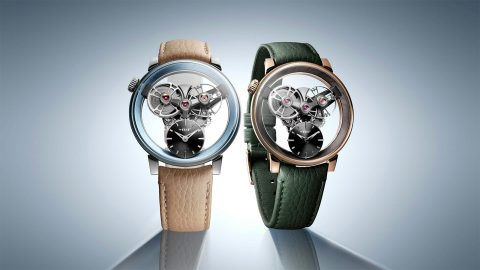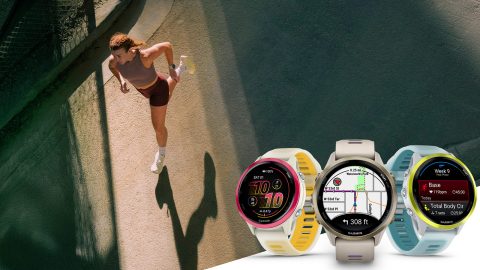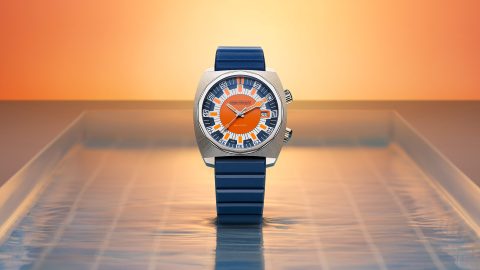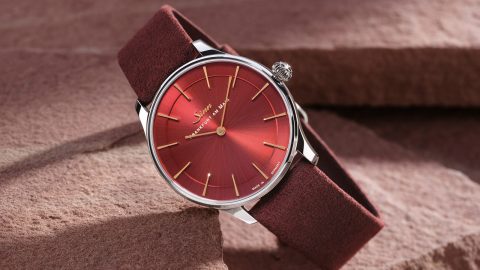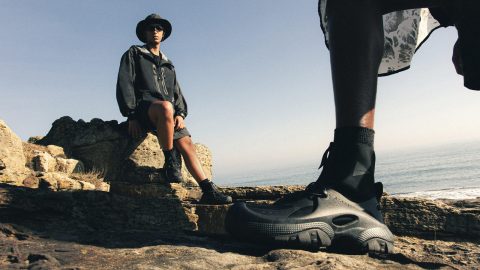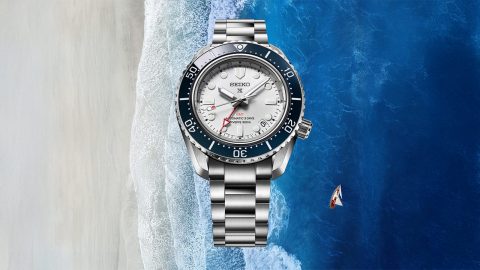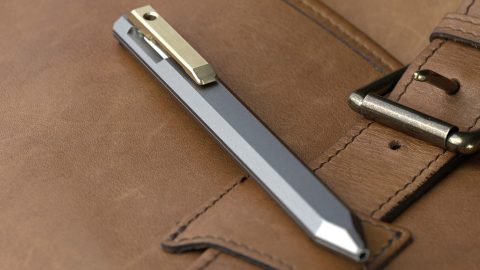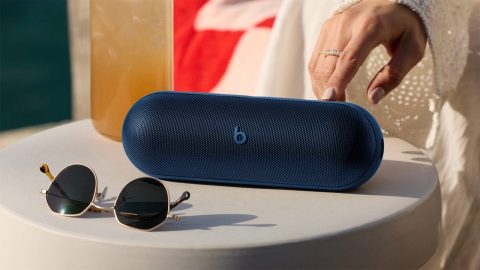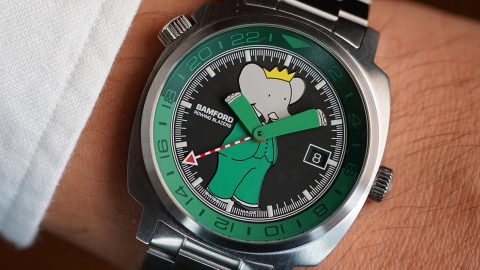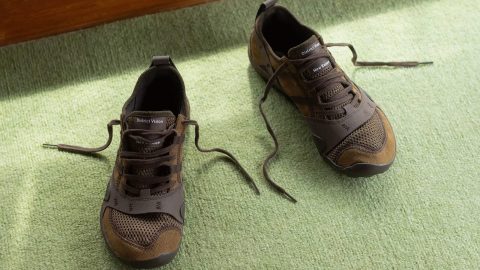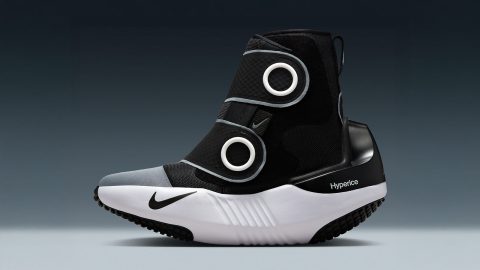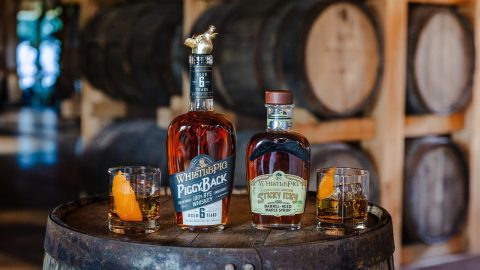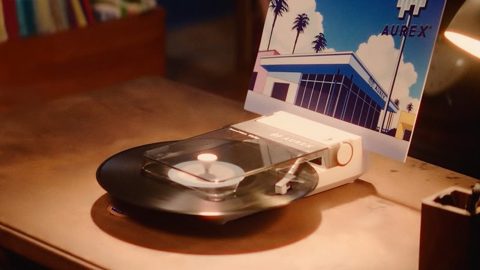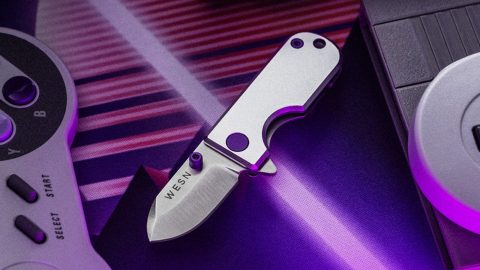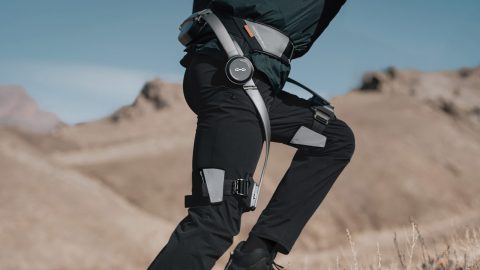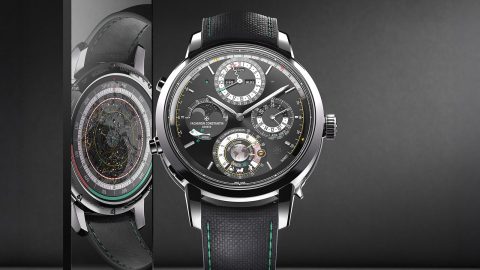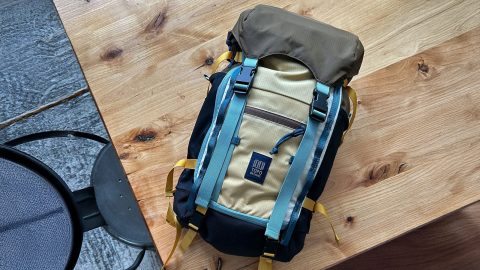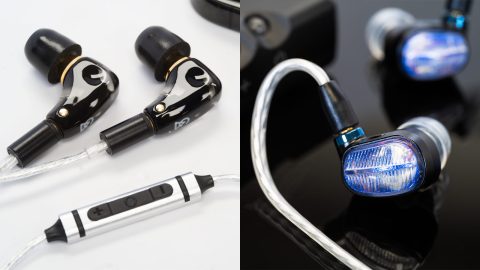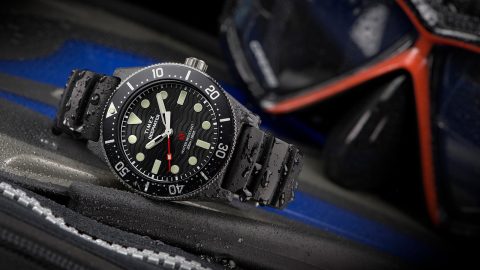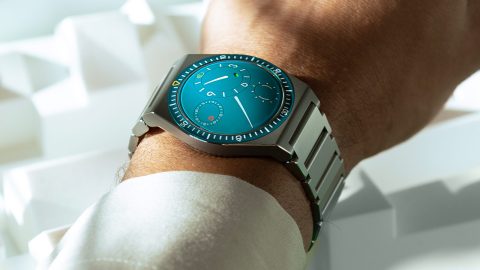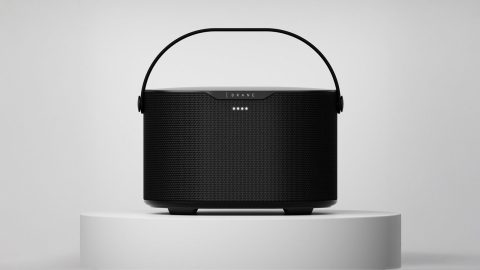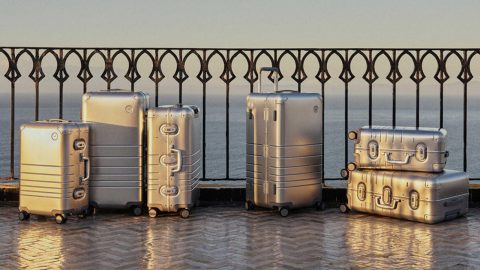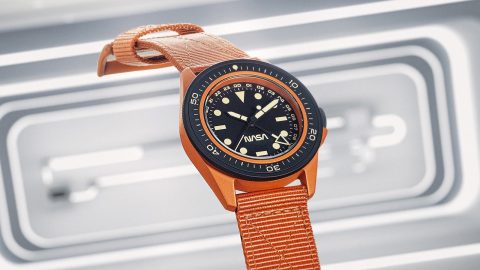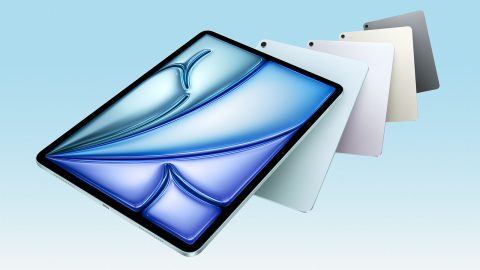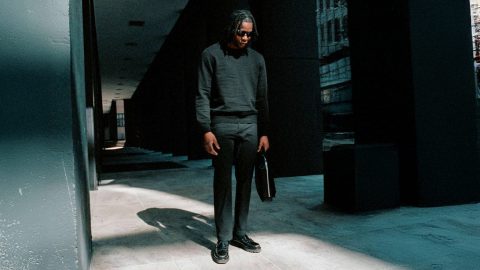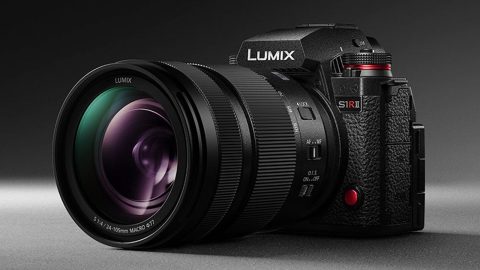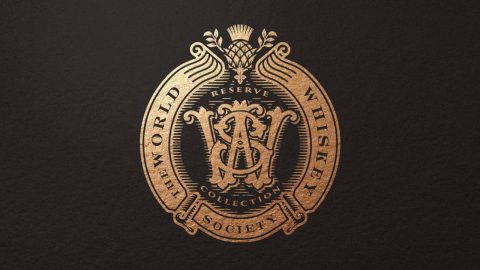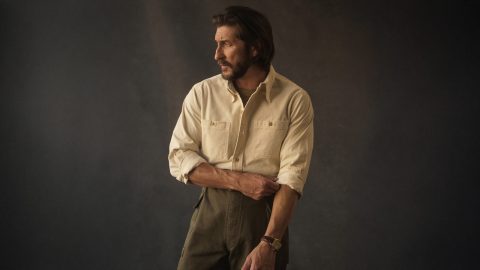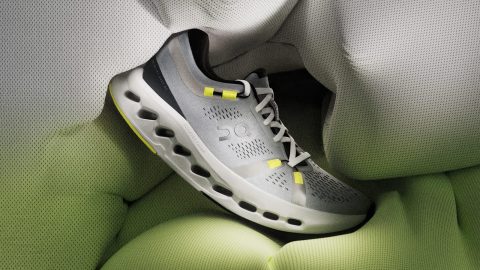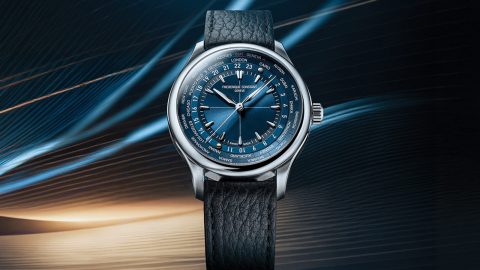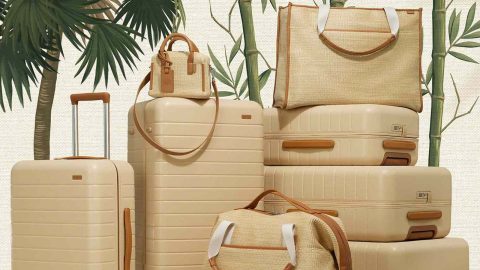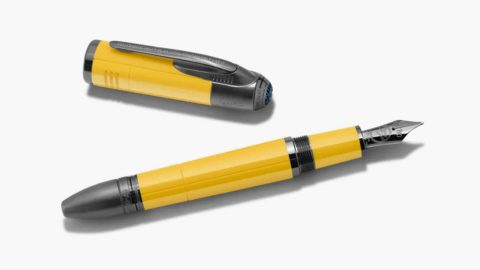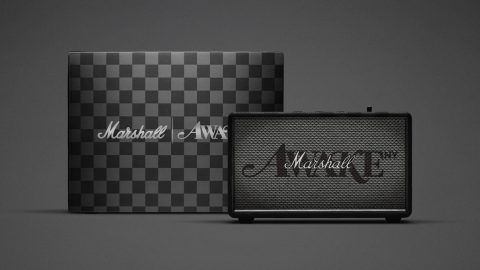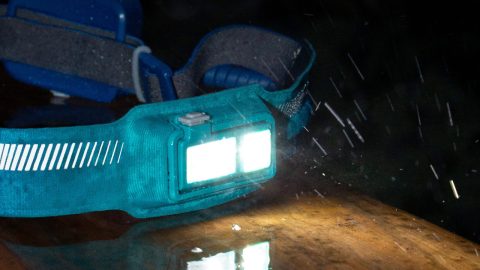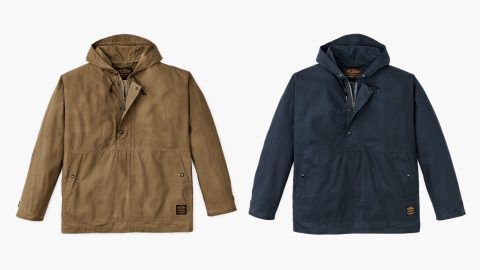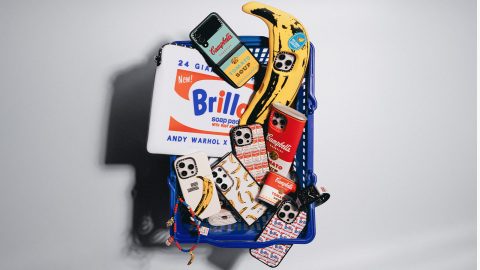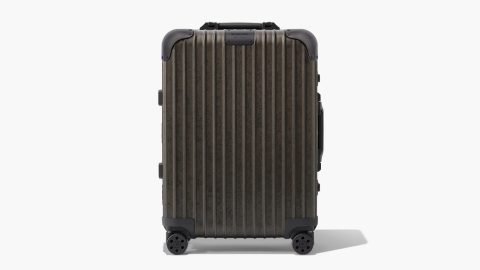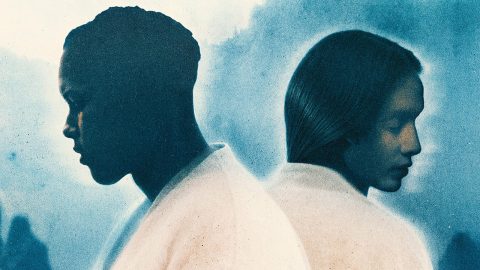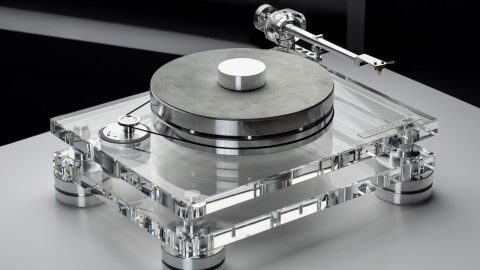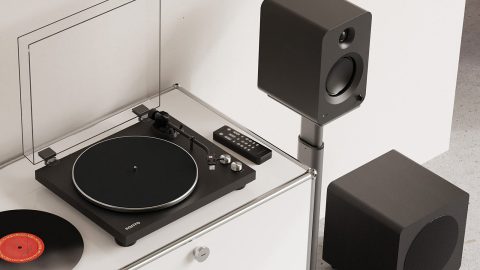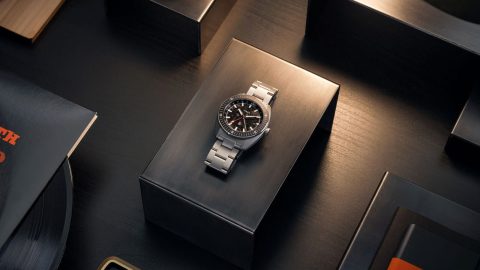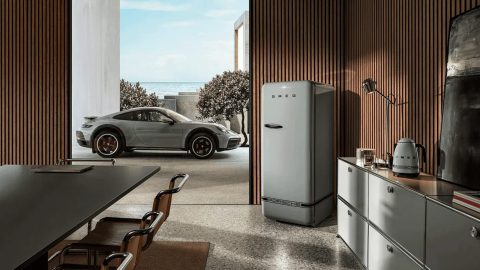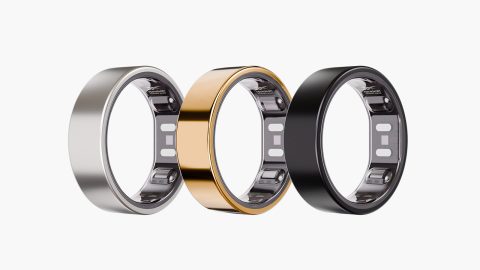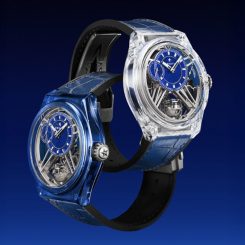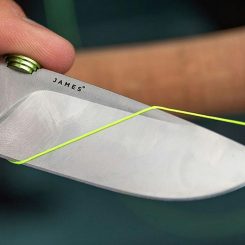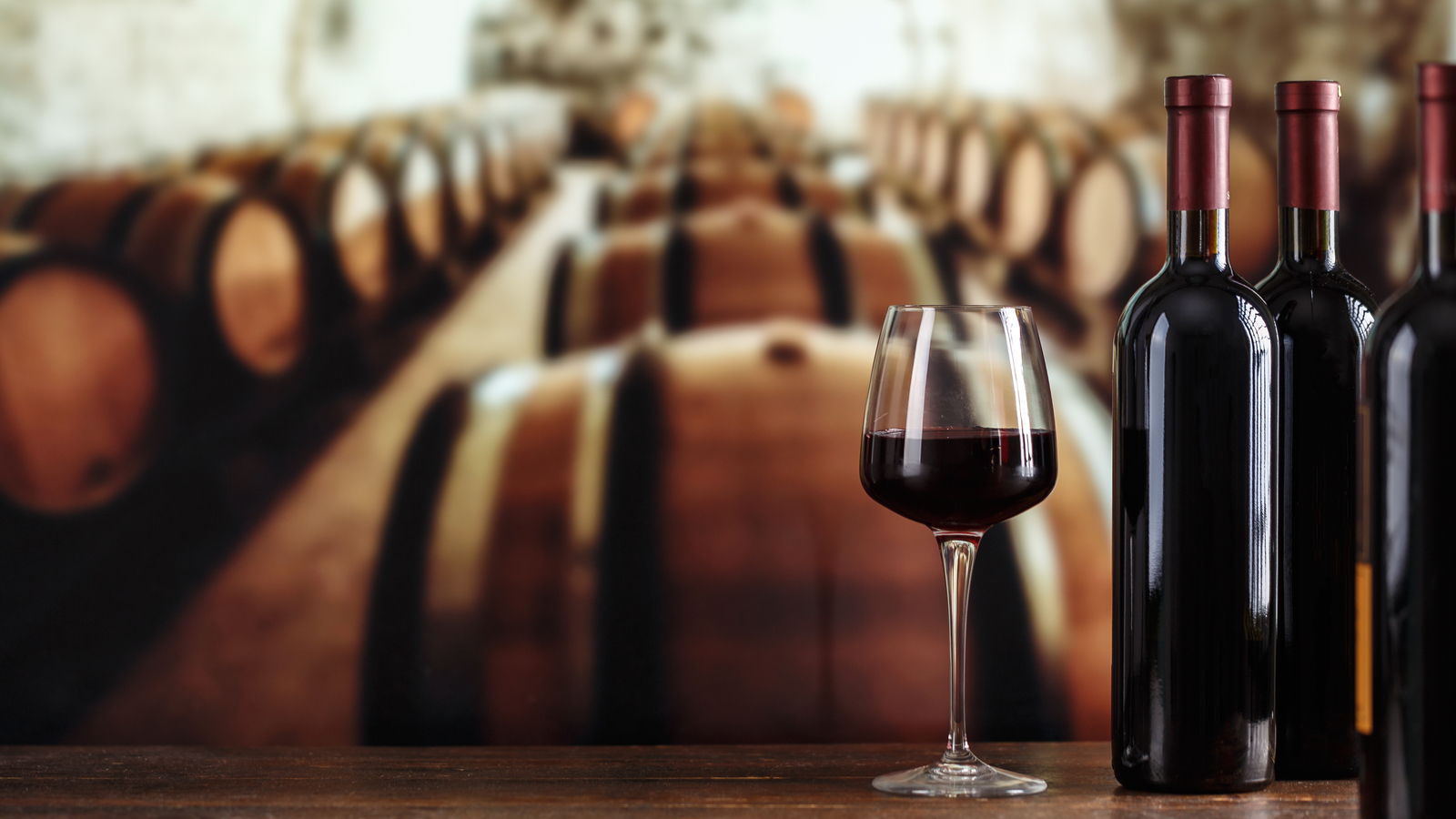
Like This, Try That: Bordeaux Edition
-
Watches URWERK Upends Expectations With The UR-10 Spacemeter
A classic dial hides URWERK’s most daring complications yet.
-
Tech New M5 MacBook, iPad & Vision Pro Drop—Here’s Why It Matters
The M5 chip delivers insane AI gains to Apple’s newest Pro lineup.
-
Tech Fujifilm’s LiPlay+ Combines Dual Cameras And Sound In One Stylish Package
Meet the instant camera that lets your photos speak—literally.
-
Footwear Salehe Bembury’s SPUNGE Brand Changes The Game
After Crocs and Versace, Bembury goes solo with SPUNGE.
-
Style Uniqlo’s Quiet Bomb: The Affordable Tech Jacket Built For Brutal Winters
Fusing military style with high-performance heat tech.
-
Footwear On Cloudmonster Hyper PAF Is Built For Max Impact
With advanced dual-foam and futuristic upper, the Hyper PAF stands apart.
-
Everyday Carry The MagSafe Wallet Reinvented By Bellroy
Bellroy’s Mag Wallet blends luxury leather with fast MagSafe access.
-
Tech Logitech’s MX Master 4 Mouse Packs Speed, Power, And Control
Haptic feedback transforms how you work with the Logitech MX Master 4.
-
Tech Meet HOLO The See-Through Digital Camera Of 2025
Transparent nostalgia meets modern specs in Manual’s $95 HOLO digicam.
-
Audio Bang & Olufsen Beo Grace Earphones Are Pure Audio Indulgence
Precision acoustics dressed in timeless B&O design.
-
Style Alpine Cool Meets Function In Sunski’s New Shades
Designed to thrive from high peaks to urban vibes.
-
Design Jeremiah Brent Brings Quiet Luxury To Crate & Barrel
Elevated essentials for those who value beauty and function.
-
Footwear The Boot That Turns Every Hike Into A Victory Lap
A boot that hikes like a beast but feels like your favorite runner.
-
Footwear Arc’teryx Norvan 4 Nivalis Is Your Winter-Running Secret Weapon
The Norvan 4 Nivalis keeps you fast, stable, and warm on icy terrain.
-
Tech Apple Unveils iPhone 17 Series And Titanium iPhone Air
Apple’s new A19 Pro chip powers AI across the iPhone 17 lineup.
-
Watches Dennison’s ALD Dual Time Revives ’70s Twin-Display Style
The ALD Dual Time combines quartz precision with retro dual dials.
-
Everyday Carry Meet The Explorer Bag—Red Wing’s Answer To Modern Adventure Gear
The Explorer Bag is rugged enough for travel, sleek enough for city life.
-
Collectibles LEGO’s $1K Death Star UCS Might Be Its Boldest Build Ever
LEGO unleashes its largest Star Wars set ever.
-
Style The Lowis Houndstooth Coat Is Carhartt WIP’s Fall Essential
Diamond quilting, corduroy accents, and houndstooth—Carhartt WIP nails it.
-
Everyday Carry Forget Click Pens, The James Brand Kent Changes The Game
Say goodbye to accidental ink stains.
-
Everyday Carry Brown Buffalo’s New Conceal Is The Ultimate Commuter Pack
This waistpack delivers everyday carry performance without the bulk.
-
Style Filson’s Short Cruiser Jacket Is Built For Decades Of Use
This Filson jacket proves waxed cotton and modern warmth can coexist.
-
Watches From The King’s Guard To Your Wrist: The Dualtimer Watch
A mission-ready GMT is now available to civilian collectors.
-
Everyday Carry Osprey & Carryology Drop Packs That Outrun Everything
Built with next-gen fabrics, the Archeon “Fūjin” packs just set a new bar.
-
Everyday Carry Meet The Invictus-ATB-SP: Light, Durable, And Zero Corrosion—Ever
A folder that laughs at sweat, salt, and abuse.
-
Watches A Sports Watch With Dress Watch DNA? Farer’s Integra Nails It
From malachite to mother-of-pearl, the Integra turns heads in every setting.
-
Health & Fitness Why The $295 OKAPA Might Be The Last Bottle You’ll Ever Buy
This isn’t a bottle—it’s a precision-built hydration machine.
-
Outdoors Van Life Reimagined: Robeta’s Ananya Brings Yachting To Asphalt
Packed with Starlink, solar, and a queen-lift bed—the Ananya is a home that drives itself to new views.
-
Food & Drink The Last Flask You’ll Ever Need—And Want To Show Off
Old-world craftsmanship for modern-day whiskey warriors.
-
Style Filson And Stetson Just Made Straw Sexy Again
Iconic style meets utility in this heat-ready collab drop.
-
Footwear The Mach X Caged Is HOKA’s Most Aggressive Sneaker Yet
Caged for control, built for flight—the Mach X Caged changes the game.
-
Footwear Salewa Wildfire NXT Is The Hardcore Hybrid Your Feet Deserve
Tackle technical climbs with precision and GORE-TEX® protection.
-
Health & Fitness Pebble Returns With Two New Watches That Break The Mold
The throwback smartwatch brand is ready for a new era.
-
Style Buck Mason’s New Drop Makes Summer Layering Look Effortless
The perfect in-between pieces for unpredictable temps.
-
Spaces Seattle’s Most Instagrammable Hotel Has Officially Arrived
Populus Seattle blends boutique vibes with tech-savvy design.
-
Collectibles LEGO Reimagines The Iconic Game Boy In Near 1:1 Brick-Built Detail
LEGO brings Nintendo’s OG handheld back to life.
-
Food & Drink Why This Small-Batch Bourbon Is Getting Big-Time Awards
Aged up to 15 years, blended to perfection.
-
Audio Campfire’s Relay Delivers Big Sound In A Small Size
Featuring a six-filter mode DAC for audio tuning.
-
Everyday Carry Pen Or Power Move? Montblanc Starwalker Delivers
Space-inspired luxury pens with unmatched balance.
-
Everyday Carry Travel Like A Pro With This 3-Piece Away Luggage Set
Smart travel luggage set for weekend getaways.
-
Everyday Carry Minimalist Design, Maximum Utility—Meet Laneway Crescent
3‑way wear shoulder, crossbody, or waist pack design.
-
Watches The Watch That Celebrates The Shark That Terrorized A Generation
Boasting a great white shark embossed dial with red JAWS logo.
-
Audio FiiO M21: Serious Sound, Zero Compromise, Pocket-Ready
A high-end portable player for FLAC and DSD files.
-
Tech How FilmVision Pro Nails Real Film Grain—No Filters Needed
Moment’s FilmVision Pro is designed to replicate the look of digitized negative-to-print film accurately.
-
Tech Meet The X-E5, The Street Photographer’s New Secret Weapon
Fujifilm’s new X-E5 mirrorless camera with interchangeable lenses.
-
Footwear norda Just Dropped The Most Thoughtful Recovery Shoe Ever
norda’s first recovery shoe, the 008, blends thoughtful design and rugged performance.
-
Audio These New Sony Speakers Are Punching Way Above Their Size
A 3-way, 3-driver speaker system for immersive sound.
-
Everyday Carry Filson Just Elevated EDC With This Graycloud Collab
Seattle handcrafted drop-point 3.25-inch scout knife.
-
Design Rolling Sculpture Or Secret Storage? Meet The Aluminum Stool
A sculptural seat that doubles as discreet whiskey vault.
-
Tech Lenovo’s 8” PureSight Screen Just Raised The Bar For Portable Gaming
Curved ergonomic grips and responsive triggers built for marathon sessions.
-
Food & Drink Joseph Magnus Drops A Bourbon Bomb
Bold, spicy, and complex—this bourbon pulls no punches.
-
Everyday Carry Hardgraft’s MacBook Case Is Pure Leather Luxury
Italian wool lining and rich tanned leather make this case a minimalist flex.
-
Watches anOrdain’s Model 2 Porcelain Is Pure Enamel Art
Glazed in ceramic white and hand-finished in Glasgow, this small-batch beauty is a future classic.
-
Footwear Lit Clogs + Timepiece: G-Shock Crocs Fusion
Streetwear meets horology in wearable shoe tech.
-
Audio Optical Stylus Turntable? Meet Wheel 3
Boasting a linear tonearm with whisper‑quiet precision.
-
Health & Fitness Garmin’s Forerunner 970 & 570 Bring Big Upgrades
From AMOLED displays to better battery life, these GPS smartwatches are built for serious training.
-
Everyday Carry Bellroy Classic Sling Bag: Sleek & Functional
The Bellroy Classic Sling is your go-to minimalist bag—stylish, secure, and perfectly sized for daily carry.
-
Watches Girard‑Perregaux x Bamford Launch Deep Diver
GP teams with Bamford to drop the Deep Diver—a fiercely stylish, pro-level dive watch.
-
Watches Sinn 1739 Römerberg: German Heritage, Modern Edge
The Sinn 1739 Römerberg mashes historical flair with precision German craftsmanship—a standout dress watch.
-
Culture The Impossible Collection: Richard Mille’s Legacy
Dive into horological art with Assouline’s stunning tribute to Richard Mille’s most iconic timepieces.
-
Footwear END x and Wander Crocs: Trailbreak Edition
Classic Crocs get rugged with END and Wander—Trailbreak adds grip, drainage, and trail-ready durability.
-
Watches Seiko’s 1968 Heritage Diver GMT Marks 60 Years of Dive DNA
Retro styling, modern movement, and serious underwater credentials—it’s a worthy tribute.
-
Everyday Carry The Proof Vanguard Pen Is Your Next EDC Obsession
Grade-5 titanium. Bolt-action. Built to outlast your notebook—and your lifetime.
-
Audio Beats Pill Speaker Booms With Style
Pocket-size punch meets crisp clarity—Beats Pill brings portable sound with aesthetic flair.
-
Collectibles LEGO Brings Keith Haring’s Dancing Figures To Life
Build bold: LEGO’s Keith Haring set captures iconic pop art energy in brick form—colorful fun for fans.
-
Watches Rowing Blazers x Bamford Watch Is Preppy Gone Punk
Sporty meets stylish: Rowing Blazers and Bamford drop a watch that’s collegiate cool with a rebellious edge.
-
Footwear District Vision x NB MT10 Redefines Trail Runs
These slick, stylish MT10 runners fuse streetwear flair with the rugged traction athletes demand off-road.
-
Health & Fitness Nike x Hyperice Hyperboot Feels Like Magic Compression
Athlete-approved recovery meets sneaker style—Nike × Hyperice Hyperboot wraps you in compressive relief.
-
Food & Drink WhistlePig Drops Troopers Maple Old Fashioned
Get thirsty—WhistlePig’s new Troopers Maple Old Fashioned bundle teases rich whiskey flavor and toasted sweetness.
-
Audio Toshiba Aurex Turntable Revives Retro Cool
Vinyl nerds rejoice—Toshiba’s Aurex AX‑RP10 brings vintage audio charm with modern mechanics.
-
Watches Timex 1995 Intrepid Reissue: Vintage Style, Modern Reliability
A faithful reissue of Timex’s classic Intrepid with updated, dependable specs.
-
Everyday Carry Wesn Console Microblade: Compact Outdoor Gear, Max Performance
This minimalist multi-tool packs big utility into a pocket-sized blade.
-
Tech Hypershell x Exoskeleton Gear Reinvents Urban Armor
Built tough and ultra-modern, the Hypershell exoskeleton setup blurs the line between fashion and function.
-
Watches Vacheron Solaria Ultra‑Grand Complication Defines Watch Artistry
This rare timepiece from Les Cabinotiers blends astronomical features with haute horology finesse.
-
Everyday Carry Topo Designs Rover Trail Pack 22L Optimizes Outdoor City Life
Rugged, stylish, and streamlined—this 22-liter pack handles trail miles and subway tiles alike.
-
Audio Campfire Audio’s Axion Alien Brain Earbuds Deliver Otherworldly Sound
High-fidelity meets bold design—these earbuds deliver cerebrally clear sound with cosmic ergonomics.
-
Audio Tivoli Audio Boutique: Retro Radio Reimagined
Tivoli’s Boutique radio blends vintage aesthetic with modern features and great sound for stylish listening.
-
Tech Apex Pro Mini Gen 3 Shrinks Down for Serious Gamers
SteelSeries packs mechanical precision into a compact keyboard designed for gamers who demand speed and control.
-
Watches Timex Deepwater Reef 200 Is Built to Dive Deep
Built to 200m water resistance, this rugged dive watch offers clear visibility and vintage-inspired clarity.
-
Watches Ressence Type 7 GMT Is Sporty Timekeeping Redefined
Ressence’s Type 7 GMT blends kinetic dial movement with sporty style for globetrotters who demand subtle precision.
-
Audio The Brane X Smart Speaker Balances Design And Acoustic Power
A minimalist speaker that doesn’t compromise on sound Brane X integrates sleek form with smart acoustic tech.
-
Everyday Carry Monos Aluminum Luggage Is Travel Armor in Style
Sleek, silent, and built like a tank—carry-on game: leveled up.
-
Footwear On’s Cloud 6 Push Adds More Support and Spring
Upgraded comfort and breathability for all-day movement.
-
Watches Unimatic x Massena U1-SPG Honors NASA’s Artemis II
Titanium stealth and lunar details define this collab release.
-
Footwear Shore Studios Footwear Pairs Earth Tones with Edge
Minimalist design and muted colors meet chunky silhouettes.
-
Style Ten Thousand Interval Collection Elevates Fitness Style
The Interval line offers sweatproof compression gear built for sprints and sweat sessions without sacrificing comfort.
-
Watches Ming Project 21 Watch Series Is Art And Precision Combined
Ming’s Project 21 Series blends sleek dial architecture and mechanical craftsmanship in a modern minimalist case.
-
Tech Apple iPad Air Redefines Portability And Power Thoughtfully
The latest iPad Air offers high performance in a sleek portable form with powerful chip and refined display for daily use.
-
Style Reigning Champ Joggers Deliver Style And Comfort
The Coach’s Pant jogger blends athletic cut with premium fabrics ideal for both training and casual everyday wear.
-
Tech Lumix S1R II Delivers Stunning Detail In Full Frame Form
Panasonic’s S1R II pushes high resolution mirrorless photography with refined autofocus and rich color reproduction.
-
Food & Drink World Whiskey Society Membership Opens Doors To Premium Tastes
Join the World Whiskey Society for curated tastings expert access and insider events in the world of whiskey.
-
Style Buck Mason Craftsman Corduroy: Rugged Comfort Refined
Buck Mason redefines corduroy with garment-dyed softness, modern workwear cut, and thoughtful utility in shirts and jeans.
-
Footwear On Cloudsurfer 2 Delivers Maximum Cushion And Speed
The latest Cloudsurfer upgrade offers plush cushioning with a smooth, energy-packed ride.
-
Watches Frederique Constant Worldtimer Combines Luxury And Travel
A sophisticated timepiece built for jet setters with a love for horological precision.
-
Everyday Carry White Lotus Away Collection Brings Vacation Luxury
A travel collection inspired by HBO’s White Lotus, designed for stylish jet-setters.
-
Outdoors Cannondale LAB71 Gravel Bike Is Pure Speed On Any Surface
Built for performance and endurance, Cannondale’s LAB71 takes gravel riding to the next level.
-
Everyday Carry Montblanc Honors Ferrari With Giallo Modena Pens
Montblanc celebrates Ferrari’s racing legacy with the bold Giallo Modena special edition writing instruments.
-
Audio Awake NY x Marshall Acton III Blends Sound & Style
The Awake NY x Marshall Acton III speaker pairs bold streetwear style with iconic Marshall sound.
-
Health & Fitness BioLite Dash 450 Lights Up Your Night Runs
Conquer nighttime runs with the BioLite Dash 450 headlamp, delivering powerful, lightweight illumination.
-
Style Moscot’s Spring 2025 Sunglasses Bring Retro Cool
Step into spring with Moscot’s latest sunglasses, merging vintage charm with modern style.
-
Culture Fantastic Four: First Steps Teaser Drops
Marvel teases its next big chapter with The Fantastic Four: First Steps teaser.
-
Style Filson’s Ranger Anorak Keeps You Storm-Ready
Brave the elements with Filson’s rugged Ranger Anorak, built for wind and rain.
-
Collectibles Andy Warhol x Casetify Brings Pop Art To Tech
The Andy Warhol x Casetify collection infuses Apple accessories with iconic pop art flair.
-
Everyday Carry Rimowa x Rick Owens Cabin Brings Gothic Travel Style
The Rimowa x Rick Owens Cabin merges luxury luggage with dark, avant-garde design.
-
Tech Shoot Like A Pro With Insta360’s Game-Changing Flow 2 Pro
Elevate your shots with the Insta360 Flow 2 Pro—multi-person ActiveZoom, selfie mirror, tripod handle, foldable design, creator bundles.
-
Style Stone Island’s 2025 Drop Channels Tactical Style
Stone Island’s latest arrivals bring technical fabrics and muted tones—perfect for the modern minimalist’s closet.
-
Style Goldwin Spiber Collection Makes Sustainable Fashion Bold
Engineered with Spiber’s biotech fabric, Goldwin’s latest collection delivers sustainable gear without compromising style.
-
Audio Musical Fidelity M6xTT Brings Analog Back in Style
The M6xTT blends timeless design with modern engineering for a turntable that makes vinyl sound richer than ever.
-
Audio The Best Vinyl Record Players for Design-Savvy Men
From minimalist designs to Bluetooth-enabled setups, these record players are crafted for the modern, design-savvy man.
-
Everyday Carry The New YETI GoBox 1 Laughs In The Face Of Mud And Rain
Keep your phone, keys, and gear safe with YETI’s smallest, toughest case yet.
-
Watches The New James Brand × Timex Collab Just Went Nocturnal
A true GMT automatic with carbon fiber and stainless steel precision.
-
Food & Drink From Le Mans To Lounge: Porsche Rewrites Kitchen Cool With Smeg
High-performance aesthetic hits morning rituals with Porsche x Smeg kitchen gear.
-
Health & Fitness A Ring That Sees Stress Before You Do: Meet Reebok Smart Ring
From sleep quality to stress detection, this ring knows what’s going on inside your body.

